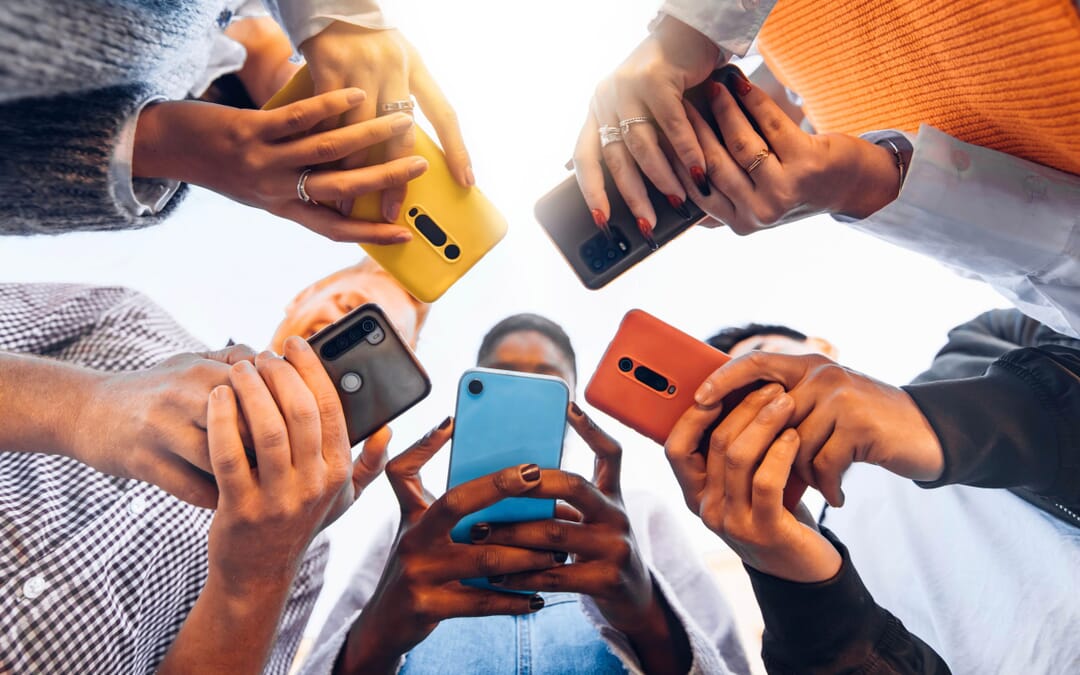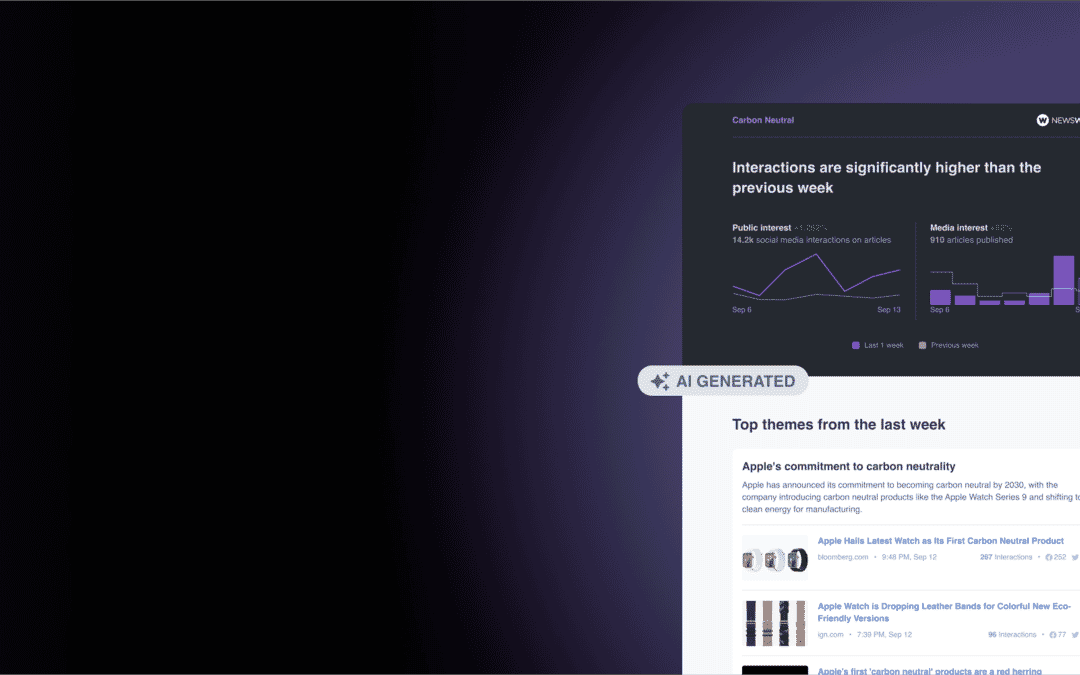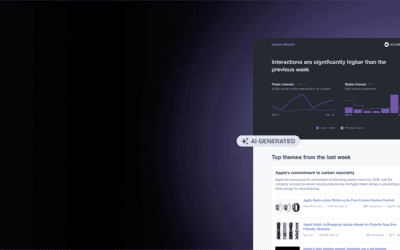We recently sat down with Bryan Pedersen of MSL to discuss earned media and the impact of data on agencies and their clients.
Bryan Pedersen is the Chief Innovation Officer at MSL, and leads their digital center of excellence. He was previously a part of innovation efforts at a number of different agencies, including FleishmanHillard and Marina Maher Communications.
For those unfamiliar, MSL is one of the largest Public Relations and Communication agencies in the world with over 100 offices in 40 different countries. Needless to say, they have played a critical role in leading the technical transformation of traditional PR.
As the Chief Innovation Officer, Bryan’s priority is to develop new offerings for the agency, expand core capabilities, and lead MSL’s digital center of excellence. Behind all of this is a completely revamped and integrated tech stack.
Earlier this week, we had the chance to chat with him about the application of data, the power of earned media, and of course, some tennis.
Brett Lofgren (President, NewsWhip): Bryan, thanks for joining us. I read your recent “talk tech” interview with Sean Czarnecki from PRWeek and understand you and Diana Littman have transformed how MSL uses data. Now the intelligence is in place, how do you apply it through your practice?
Bryan Pedersen: We infuse data into everything we do. From understanding the media landscape, identifying the most influential authors, developing a strategy and measuring success, data connects all those pieces from start to finish. More importantly, we are using data that is unique to the communications world. Oftentimes you can find syndicated data providing insights into Creative, Paid Media, Digital and PR, and while that data does have its value across disciplines, there’s nothing as powerful as using PR and Comms-specific data to advance the way we influence and impact audiences.
BL: Could you take us through a real-world example? New business pitches or crisis and issues management? Not to give away your secret sauce, but more interested in understanding how the process has evolved.
BP: Absolutely. We have significantly advanced how we handle Earned Media. Not only do we have an amazing team in place, we have really sought to bring data into a traditionally relationship-driven world. Working with companies like NewsWhip, we are identifying who are the most influential voices in a space not just based on name recognition, but based on who is being shared the most on social, how much time are people spending on articles, how are they discovering the content, and what are they doing after they consume that content. This is a tremendous difference at the onset of a media plan, and combines the art of relationships with the data we now have access to.
BL: We live in a 24/7 news cycle where clients have high expectations, so speed to insight is extremely important. How do you approach this with data, as responding immediately is important, but also needs to be informed?
BP: I think this is really the promise of machine learning. Nothing to date can replace human judgment, but being able to sort through large volumes of data gives us a solid benchmark and gives us a chance to make sense of rapidly evolving stories. NewsWhip helps us really make sense of this, and we rely on both machine learning and historical data and benchmarks to provide responses that are both timely and with context.
BL: Last month, over 3,000 leaders gathered at the World Economic Forum in Davos, Switzerland. A major topic of conversation was centered on brands and climate change. This is a very important conversation, especially for the youth movement on social issues. How does your team use data to provide recommendations to brands to participate and take a stand and then guide them through that journey?
BP: We certainly track sentiment around issues like climate change, in fact we have a group dedicated to cultural trends. Given our data partnerships as well as having the largest influencer database worldwide, we have a lot of information on how people are thinking, feeling, and acting on particular issues like climate change. From everyday people up to macro, celebrity and publisher-level influencers we can provide context and volume to our brand partners. In addition, two points are very important here, data accuracy and trajectory. The data accuracy requires the right data partners and the right approaches. Tracking trajectory on the other hand really allows you to better predict how things will turn out, and requires not only strong data but historical data to compare it against.
BL: A big focus of yours is earned media, can you talk a bit about why that is and what you’re looking to do with it today/tomorrow?
BP: We’re incredibly focused on the power of earned media. It’s a discipline that has been deprioritized almost in many PR firms today as creative, strategy, digital and influencers have really taken off. But nothing replaces the power of third party, credentialed, and expert advice. The problems have always been scale and measurement, and I think with our approaches to targeting, insights, and direct data access, we are really solving those two historical limitations.
BL: How do you track progress with using all this data and technology?
BP: We have been focused on making sense of this data, and even more importantly, connecting all this data. You might’ve seen a very large data company that Publicis purchased last year, and they have deep experience connecting data from many different sources. We have made tremendous advances in the data that is available now in PR, but making sense of it is very different than just gaining access to it. We’ve learned a lot in recent months in how to best combine and make sense of this data.
BL: How have your priorities changed now that you built the ideal tech stack – what’s next?
BP: The next priority is customizing it now for our different clients and industries. Data is only as good as the insights they generate and the actions they precede. And the only way to make data as actionable and insight driven as possible, is to be as specialized to a client and industry as we can. We have the infrastructure in place, and we’re excited to partner with our clients to make it unique to them and learn even more nuances as we roll out custom solutions built in partnership with our data partners like NewsWhip.
BL: I googled your name and found your ranking of 4.5 and recent tennis scores on the USTA website. As the Chief Innovation Officer at MSL tell me, do we really need to have line judges to make in or out calls? Seems a bit outdated.
BP: The technologist in me says no, but the sports fan in me definitely says yes! What fun would it be to see John McEnroe or Roger Federer arguing with a line calling machine? I think we’d lose a lot of the drama without human judgment.
Many thanks to Bryan Pedersen for sitting with us. We hope this Q&A has provided some insight into how data can inform and transform earned media capabilities across the world of PR & Communications.
To see how NewsWhip can add a data layer to your workflow, check out Spike and Analytics.











